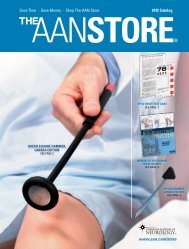weakness: practical guide for family physicians - American Academy ...
weakness: practical guide for family physicians - American Academy ...
weakness: practical guide for family physicians - American Academy ...
Create successful ePaper yourself
Turn your PDF publications into a flip-book with our unique Google optimized e-Paper software.
Table 1: Characteristics of upper motor neuron <strong>weakness</strong><br />
Distribution Lower face,<br />
Extensor muscles in the arm<br />
Flexor muscles in the leg<br />
Muscle Tone Spasticity,<br />
Increased resistance overcoming flexion in the arm and overcoming<br />
extension in the leg (Like opening a clasped knife)<br />
Reflexes Deep tendon reflexes are increased and clonus may be elicited<br />
Pathological Clonus at the patella or ankle<br />
Reflexes<br />
Babinski sign in the lower extremity<br />
Atrophy Does not occur with UMN <strong>weakness</strong><br />
Mild disuse atrophy may be seen<br />
Coordination There is slowness or incoordination of fine motor movements, eg,<br />
tapping fingers or wiggling toes<br />
Case 2<br />
A 33-year-old male construction worker has been in good health except <strong>for</strong> a recent bout of<br />
gastroenteritis. Initially he noted some paresthesias in his feet and less so in his fingers. The<br />
following day he noted difficulty climbing a ladder. He presented to the Emergency Department<br />
and was noted to have hypoactive deep tendon reflexes, no sensory loss and was able to walk<br />
unassisted. A diagnosis of “flu” was given and he was given symptomatic treatment. He spent the<br />
remainder of the day resting in bed. The following morning he fell while attempting to walk to<br />
his bathroom and at that time, was unable to stand without support. Re-evaluation, at the<br />
Emergency Department, revealed distal leg <strong>weakness</strong> and absent deep tendon reflexes. There was<br />
no objective sensory deficit.<br />
Other studies included normal EKG, CPK and troponin and normal chest x-ray.<br />
Neurology consultation was obtained. Nerve conduction/EMG studies revealed prolonged distal<br />
motor latencies and slowed nerve conduction velocities. CSF was obtained and showed a protein<br />
level of 80 mg/dl with no cells and normal glucose. Treatment was started.<br />
The following day the patient noted some difficulty grasping and elevating his arms but<br />
then stabilized. After one week of treatment strength started to return in the upper, then lower<br />
extremities.<br />
Discussion. This individual had a subacute process causing progressive <strong>weakness</strong> that<br />
started distally and progressed proximally over days, ultimately affecting the patient’s ability to<br />
walk. Over time, the deep tendon reflexes disappeared, suggesting a lower motor neuron or<br />
peripheral nerve lesion. Associated findings are elevated CSF protein with a normal cell count<br />
(albumino-cytologic dissociation) and slowed motor nerve conduction velocities (demyelination).<br />
The disorder that is most likely to produce this profile is acute inflammatory demyelinating<br />
polyradiculoneuropathy (AIDP) also known as Guillain-Barré syndrome.<br />
127



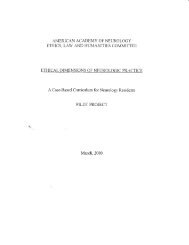


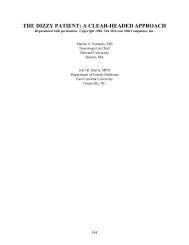

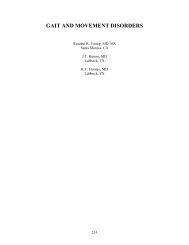
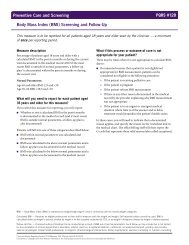
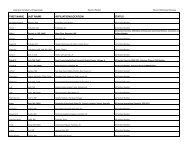
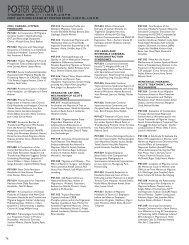
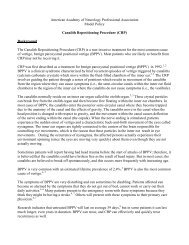
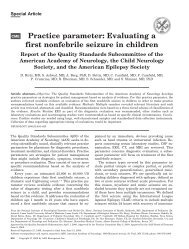

![[Click here and type date] - American Academy of Neurology](https://img.yumpu.com/8582972/1/190x245/click-here-and-type-date-american-academy-of-neurology.jpg?quality=85)
